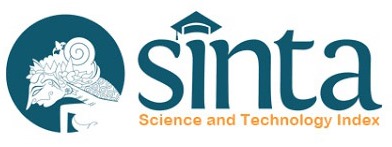Golden Sea Cucumber: Identification and the Antioxidant Activity of Its Collagen Hydrolysates
Abstract
Golden sea cucumber or locally known as “teripang emas” is one of Indonesia’s most popular sea cucumber and widely processed as functional food or supplement due to its bioactivities. The sea cucumber is often misidentified due to its morphological similarities with other Stichopus spp. This study aimed to identify the golden sea cucumber obtained from West Nusa Tenggara, Indonesia, by a molecular method and study the antioxidant activities of its collagen hydrolysates. The hydrolysates were produced by hydrolyzing acid collagen extract using neutrase for 30, 60, 120, 180, and 240 mins. The products were then analyzed for their degree of hydrolysis, peptide content, molecular weight distribution and radical scavenging activity by the 2,2-Diphenyl-1-picrylhydrazyl (DPPH) method. Results showed that hydrolysis for 180 mins was optimal in producing the highest peptide content, 12.79 ± 0.44 mg/mL, with a degree of hydrolysis (DH) of 55.2 ± 1.50%. However, the highest antioxidant activity (IC50 of 5.25 ± 0.15 mg/mL) was demonstrated after 60 mins hydrolysis with molecular weight (MW) ranged from less than 14.4 kDa to approximately 25 kDa. The hydrolysate might be categorized as a weak to moderate antioxidant. Based on the molecular identification, the golden sea cucumber had 99% similarities with Stichopus horrens and S. monotuberculatus.
Keywords
Full Text:
PDFDOI: https://doi.org/10.15578/squalen.511
Refbacks
- There are currently no refbacks.
ISSN : 2089-5690(print), E-ISSN : 2406-9272(online)
This work is licensed under a Creative Commons Attribution-NonCommercial-ShareAlike 4.0 International License.










